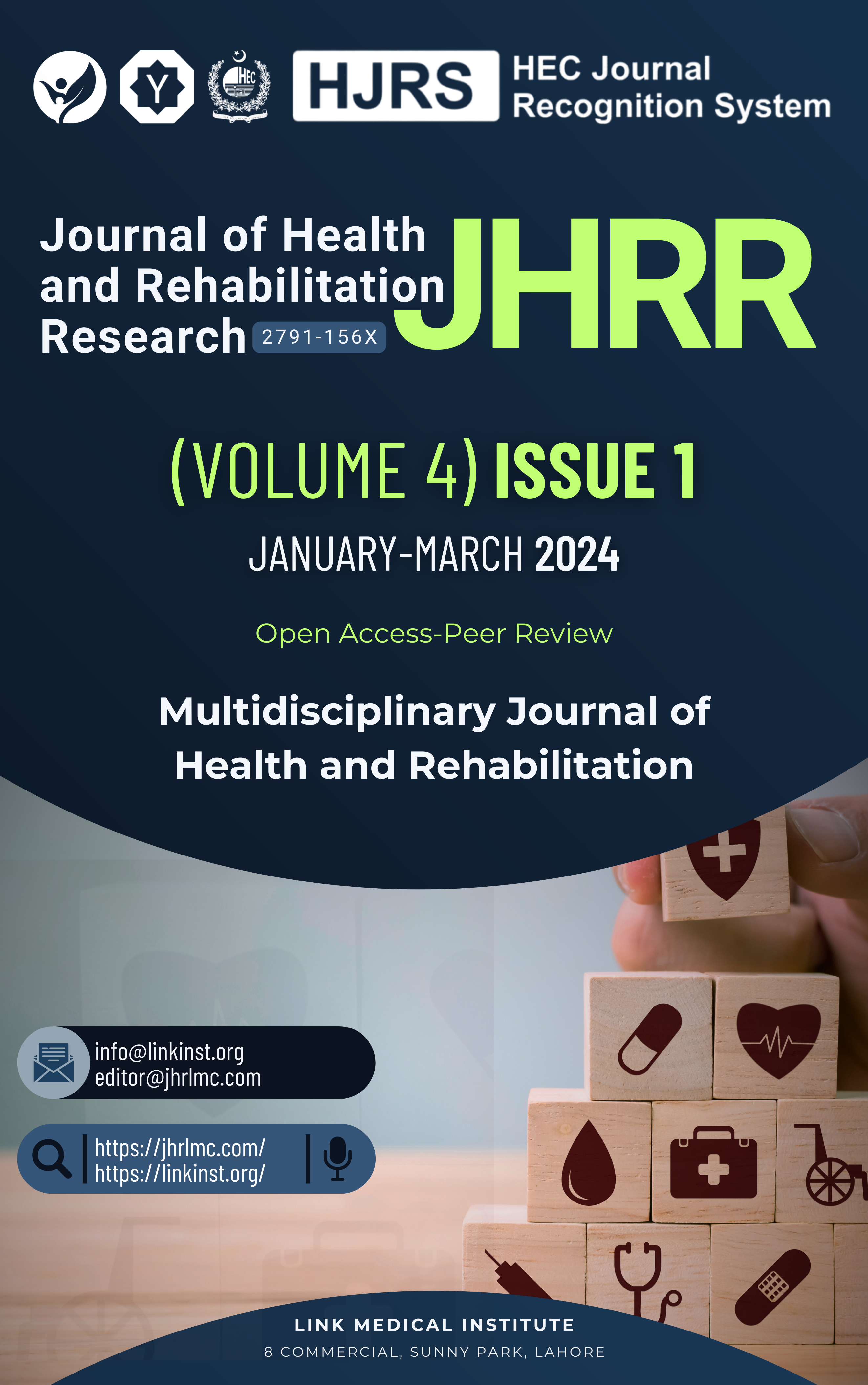Etiology of Seizures in Children Aged 6 Months to 10 Years Presenting to Tertiary Care Hospital
DOI:
https://doi.org/10.61919/jhrr.v4i1.1731Keywords:
Seizures, Pediatric Neurology, Febrile Seizures, Neurocysticercosis, CNS Infections, Generalized Seizures, Status EpilepticusAbstract
Background: Seizures are a common cause of pediatric hospitalizations, associated with significant morbidity and mortality. The etiology of seizures in children varies globally, with limited data from resource-limited settings.
Objective: To determine the etiology, clinical types, and outcomes of seizures in children aged 6 months to 10 years admitted to a tertiary care hospital in Quetta, Pakistan.
Methods: A retrospective analysis of 276 children admitted with seizures between August 2021 and February 2022 was conducted. Data included demographics, clinical presentations, laboratory findings, neuroimaging, electroencephalography (EEG), and outcomes. Seizures were classified using the International League Against Epilepsy 1993 guidelines. Logistic regression was applied to assess associations, and results were analyzed using SPSS version 25. Ethical approval was obtained, and the study adhered to the Declaration of Helsinki.
Results: Generalized tonic-clonic seizures were the most common type (69.9%), followed by partial seizures (19.8%). Febrile seizures accounted for 30.5%, while neurocysticercosis represented 12%. Abnormal neuroimaging findings were present in 45.9% of cases, with neurocysticercosis being most prevalent. Mortality was 4.4%, primarily associated with CNS infections and status epilepticus (p < 0.001).
Conclusion: Febrile seizures and CNS infections were the predominant causes of pediatric seizures. Improved preventive measures, diagnostics, and management are essential to reduce morbidity and mortality.
Downloads
References
Friedman MJ, Sharieff GQ. Seizures in Children. Pediatric Clinics of North America. 2006;53:257–277.
Martindale JL, Goldstein JN, Pallin DJ. Emergency Department Seizure Epidemiology. Emergency Medicine Clinics of North America. 2011;29(1):15–27.
Hauser WA. The Prevalence and Incidence of Convulsive Disorders in Children. Epilepsia. 1994;35(Suppl 2):S1–S6.
Idro R, Gwer S, Kahindi M. The Incidence, Aetiology, and Outcome of Acute Seizures in Children Admitted to a Rural Kenyan District Hospital. BMC Pediatrics. 2008;8:5.
Chen CY, Chang YJ, Wu HP. New-Onset Seizures in Pediatric Emergency. Pediatrics and Neonatology. 2010;51(2):103–111.
Murthy JMK, Yangala R. Acute Symptomatic Seizures: Incidence and Etiological Spectrum in a Hospital-Based Study From South India. Seizure. 1999;8:162–165.
Huang CC, Chang YC, Wang ST. Acute Symptomatic Seizure Disorders in Young Children: A Population Study in Southern Taiwan. Epilepsia. 1998;39(9):960–964.
Basu S, Ramchandran U, Thapliyal A. Clinical Profile and Outcome of Pediatric Neurocysticercosis: A Study From Western Nepal. Journal of Pediatric Neurology. 2007;5:45–52.
Rayamajhi A, Singh R, Prasad R, Khanal B, Singhi S. Study of Japanese Encephalitis and Other Viral Encephalitis in Nepali Children. Pediatrics International. 2007;49(6):978–984.
Hauser WA, Beghi E. First Seizure Definitions and Worldwide Incidence and Mortality. Epilepsia. 2008;49(Suppl 1):8–12.
Geerts A, Arts WF, Stroink H, Peeters E, Brouwer O, Peters B, et al. Course and Outcome of Childhood Epilepsy: A 15-Year Follow-Up of the Dutch Study of Epilepsy in Childhood. Epilepsia. 2010;51(7):1189–1197.
Goldstein JL. Evaluating New Onset of Seizures in Children. Pediatric Annals. 2004;33(6):368–374.
Bautovich T, Numa A. Role of Head Computed Tomography in the Evaluation of Children Admitted to the Pediatric Intensive Care Unit With New-Onset Seizure. Emergency Medicine Australasia. 2012;24(3):313–320.
Sharma S, Riviello JJ, Harper MB, Baskin MN. The Role of Emergent Neuroimaging in Children With New-Onset Afebrile Seizures. Pediatrics. 2003;111(1):1–5.
Shakya KN, Shrestha R, Baral MR. Epilepsy in Children: An Epidemiological Study at Kathmandu Medical College Teaching Hospital. Kathmandu University Medical Journal. 2003;1(1):14–19.
Finkenbine RD, Acland S, Finkenbine SS. Epilepsy at Four Kaski Village Health Posts. In: Proceedings of the International Workshop on Epilepsy. Kathmandu: EPICADEC and Department of Psychiatry, IOM; 1996 Apr 15; p. 24–33.
Commission on Epidemiology and Prognosis, International League Against Epilepsy. Guideline for Epidemiologic Studies on Epilepsy. Epilepsia. 1993;34:592–596.
Prober CG, Dyner LL. Central Nervous System Infections. In: Nelson Textbook of Pediatrics. 19th ed. Philadelphia: W.B. Saunders; 2012. p. 2088.
Sathian B, Sreedharan J, Baboo NS, Sharan K, Abhilash ES, Rajesh E. Relevance of Sample Size Determination in Medical Research. Nepal Journal of Epidemiology. 2010;1(1):4–10.
Sathian B. Reporting Dichotomous Data Using Logistic Regression in Medical Research: The Scenario in Developing Countries. Nepal Journal of Epidemiology. 2011;1(4):111–113.
Sathian B. Methodological Rigors in Medical Journals From Developing Countries: An Appraisal of the Scenario in Asia. Nepal Journal of Epidemiology. 2011;1(5):141–143.
Academy of Pediatrics. Provisional Committee on Quality Improvement, Subcommittee on Febrile Seizures: Practice Parameter: The Neurodiagnostic Evaluation of the Child With a First Simple Febrile Seizure. Pediatrics. 1996;97:769–772.
Santos MI, Nzwalo H, Monteiro JP, Fonseca MJ. Convulsive Status Epilepticus in the Pediatric Emergency Department: Five-Year Retrospective Analysis. Acta Medica Portuguesa. 2012;25(4):203–206.
National Immunization Programme (NIP). NIP History at a Glance. WHO Nepal [Internet]. 2011 Mar 15 [cited 2013 Mar 1]. Available from: http://www.nep.searo.who.int/EN/Section4/Section29/Section89.htm.
Downloads
Published
How to Cite
Issue
Section
License
Copyright (c) 2024 Nimra Zafar, Sharoon Javed, Shamayal Mandokhel, Ursila Anwar, Zarafshan Khan, Abdul Ghaffar Khan

This work is licensed under a Creative Commons Attribution 4.0 International License.
Public Licensing Terms
This work is licensed under the Creative Commons Attribution 4.0 International License (CC BY 4.0). Under this license:
- You are free to share (copy and redistribute the material in any medium or format) and adapt (remix, transform, and build upon the material) for any purpose, including commercial use.
- Attribution must be given to the original author(s) and source in a manner that is reasonable and does not imply endorsement.
- No additional restrictions may be applied that conflict with the terms of this license.
For more details, visit: https://creativecommons.org/licenses/by/4.0/.






